Avian influenza: Health officials are preparing for the worst
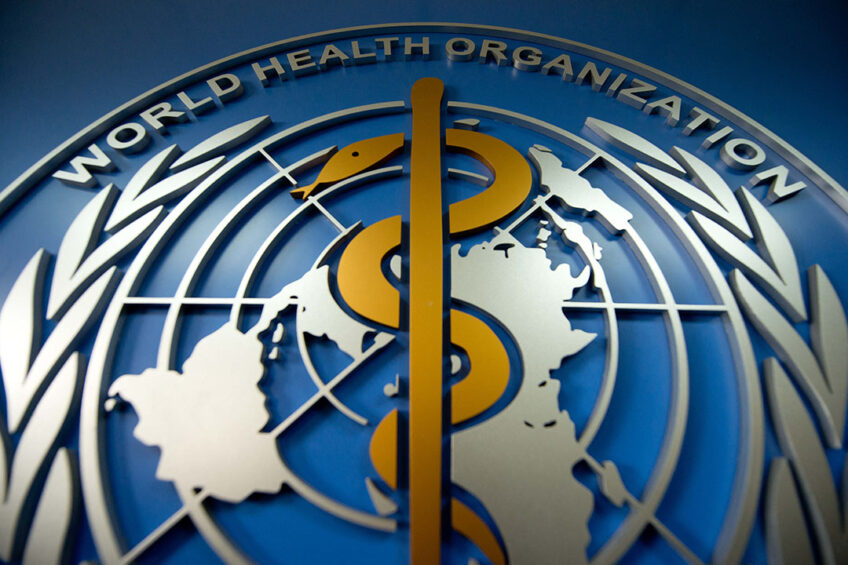
The death of an 11-year-old Cambodian girl from avian influenza and the fact that her father also tested positive has led to the unlikely scenario that it could mutate and cause a pandemic in people. Poultry World reports on the latest work across the health and poultry sectors.
Since late 2021, the world has been experiencing one of the worst global avian influenza outbreaks on record. Tens of millions of poultry have been culled and there have been a huge number of wild bird die-offs (mortality events in wild animals). There have been growing numbers of mammals catching bird flu as well, including dolphins, bears, cats, foxes and otters, prompting speculation that it could spread to humans.
The death of the Cambodian girl from a village in the southeastern province of Prey Veng on 22 February shortly after she tested positive for the H5N1 bird flu strain and the fact that her father tested positive for the virus the day after, has caused some alarm. But the Cambodian Health Ministry said an investigation determined that the father and daughter had “both been infected from poultry at their village, and there is no indication of evidence that there was infection from father to daughter”. The conclusion was supported by experts from both the World Health Organisation and the US Centres for Disease Control and Prevention.
Erik Karlsson of the Pasteur Institute of Cambodia, was part of the team that tested the virus sample from the girl. In an interview published in the scientific journal, Nature, he spoke of his surprise that she was the first person in the country to be detected with H5N1 since 2014. Karlsson suggested that her case might be related to “a lot of global changes in agricultural practices owing to the Covid-19 pandemic that could have created the conditions for a spillover”.
Modelling scenarios
Countries are sharing details of their plans against bird flu, including modelling for a scenario that it could mutate and cause a pandemic in people. The UK Health Security Agency (UKHSA) says there is no room for complacency, with one expert telling the BBC, “we must prepare for the worst” just in case. Dr Meera Chand, from the UKHSA, said that while all the latest evidence pointed to the fact that H5N1 could not currently spread easily to people, vigilance was needed: “Viruses constantly evolve and we remain vigilant for any evidence of changing risk to the population, as well as working with partners to address gaps in the scientific evidence.”
So the UKHSA is preparing for a worst-case scenario of human-to-human spread and is modelling how many might become infected and get very sick, whether lateral flow tests and blood tests would be helpful, and what genetic mutations might signal an increased risk to human health.
Human vaccines
While there is still an ongoing debate as to the use of vaccines in poultry, for humans there are already 2 virus strains that are closely related to the circulating H5N1 virus that manufacturers can use to develop new shots. Reuters reports that at least 3 pharmaceutical companies, namely GSK, CSL Seqirus and Moderna are developing vaccines that match the circulating subtype and are close to testing it on humans.
Speaking on BBC Radio 4, Professor Sir Andrew Pollard said bird flu did have “pandemic potential” as humans did not have immunity. Pollard, part of the Oxford-AstraZeneca Covid vaccine team said: “In the human population at the moment, there is no immunity against this strain of H5N1 because we never had an outbreak of that in humans. So there’s just no immunity, and that’s why it has pandemic potential, and why it’s so important to be vigilant.”
Sir Jeremy Farrar, recently appointed chief scientist of the World Health Organisation, agreed the current pandemic of avian H5N1 was a really concerning issue, particularly as historically, of the hundreds of people who have been infected with the virus, 30% have died. “We’re not going to face that scenario, I don’t think, but if we allow an avian virus to which none of us has got any immunity to continue to circulate in birds and then increasingly, whether it’s minks or seals, come across into the mammalian sector and therefore start to adapt, there’s a risk there. You can’t quantify it. But we don’t have an H5N1 vaccine tomorrow ready to go,” he told The Guardian newspaper.
Benign advice
Advice from the WHO is more benign. It says: “Whenever avian influenza viruses are circulating in poultry, there is a risk for sporadic infection and small clusters of human cases due to exposure to infected poultry or contaminated environments. Sporadic human cases are not unexpected. The zoonotic threat remains elevated due to the spread of the viruses among birds.”
The WHO continued: “However, the overall pandemic risk associated with A(H5) is considered not significantly changed in comparison to previous years. WHO recommends that Member States remain vigilant and consider mitigation steps to reduce human exposure to potentially infected birds to reduce the risk of additional zoonotic infection.”
Tedros Adhanom Ghebreyesus, WHO director-general, confirmed the risk to humans was still rate but that “avian influenza’s spillover to mammal species must be monitored closely”.
Matthew Miller, director of DeGroote Institute for Infectious Disease Research at McMaster University, Canada, said the key to helping stop the virus from spreading into something more dangerous was to make sure the virus did not have the chance to adapt. Miller said that if humans encounter a dead bird or other wildlife species, the risk came from handling, so people needed to avoid contact at all costs.
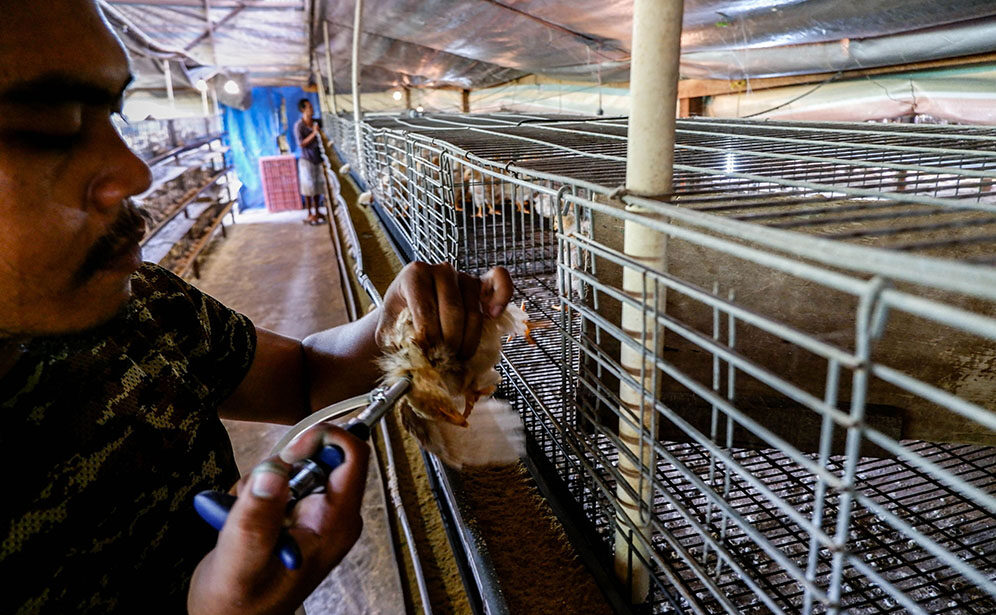
Actions within the poultry industry
So what should the poultry industry be doing? The World Organisation for Animal Health (WOAH) said avian influenza puts at risk global food security and the livelihoods of those who depend on poultry farming. In collaboration with its network of experts, it is closely monitoring the situation to assess the risk to both animals and humans.
Earlier this spring, it called on its members to:
- Maintain enhanced disease surveillance in domestic and wild birds.
- Prevent the spread of the disease by implementing strict biosecurity measures in poultry holdings. In particular, step up the biosecurity around mink farms to avoid the introduction of the virus.
- Control the movements of susceptible domestic animals and their products to avoid disease spread.
- Protect humans in close contact with, or handling, poultry or sick domestic or wild animals. Exposed humans should always take precautionary measures, including wearing personal protective equipment, particularly when investigating die-offs or outbreaks.
- Monitor susceptible domestic and wild animals. Investigate any unusual increase of die-offs.
- Report cases of avian influenza in all species to WOAH through the World Animal Health Information System (WAHIS) and in accordance with international standards. Timely and transparent reporting is key to maintain good knowledge of the disease situation and to prevent any type of misinformation or disinformation.
- Share genetic sequences of avian influenza viruses in publicly available databases.
WOAH is fully committed to supporting its members mitigate risks against the impact of avian influenza and will continue to engage with its networks of experts as well as public and private partners, notably through the One Health Quadripartite Alliance and the Global Framework for transboundary animal diseases (GF-TADs) to provide technical updates as more information becomes available, it added.
Registration
So what can the poultry sector do given that so much advice has already been given around improving and enhancing on-farm biosecurity?
The Covid pandemic increased the amount of backyard poultry farming globally and it is this area that is a cause for concern. The UK government is looking to widen its current poultry register that commercial farmers have to sign up to, in order to include every smallholder with a bird as part of its efforts to tackle bird flu. At present, only those who keep 50 birds or more are required by law to do so and they would also be required to update their information on an annual basis. By registering their birds with the Animal and Plant Health Agency (APHA), keepers will ensure they receive important updates such as any local avian influenza outbreaks and information on biosecurity rules to help protect their flocks from avian influenza.
Bird vaccination
To date, most of the world’s largest poultry producers have discounted vaccinations because of fears shots could hamper trade and mask the spread of the virus. Others have said that by adopting a vaccination policy it is tantamount to acknowledging that the disease has become endemic or it could lead to mutation. As a result, culling has continued. Nevertheless, bird vaccination has increasingly risen up the agenda across the globe. France is on track to start vaccinating farm birds in September, while Ecuador has unveiled plans for at least 2m vaccinations. Officials in the UK and US are considering plans to roll out a bird flu vaccine and the EU has also agreed on a new harmonised vaccination strategy, with rules to include surveillance and biosecurity measures.
Carel du Marchie Sarvaas, executive director of Health for Animals, said that although the majority of countries were still looking to cull, the situation was changing: “That strategy might have worked in the past, but it doesn’t work anymore, if you look at the seriousness of the outbreak…and the only other strategy, besides culling or keeping birds inside to prevent spread, is vaccination. So you can see countries – major, influential countries, who are suffering – quietly changing their minds on this,” he told the Daily Telegraph.
Other countries in the Far East have been vaccinating their poultry against bird flu with varying degrees of success. Indonesia was lambasted for using vaccines that were not targeted enough but then moved to locally-produced shots which matched circulating strains. Since then, cases in both poultry and live birds have declined and there have also been fewer human cases linked to commercial poultry.
China, which has been vaccinating against bird flu for nearly 20 years, claims to have reduced the number of human cases through a new inactivated vaccine to target the H7N9 strain. This led to a cut in cases in poultry by more than 90% and a reduction in human cases, indicating that “vaccination of poultry successfully eliminated human infection”.
At the end of the day, vaccines can control the virus and reduce the viral load, but it does not stop the spread. Biosecurity is still the only way to prevent infection.
Join 31,000+ subscribers
Subscribe to our newsletter to stay updated about all the need-to-know content in the poultry sector, three times a week."*" indicates required fields

More about
Rapid, highly-accurate on-farm HPAI testing coming
Avian influenza hits US egg producer, again
 Beheer
Beheer
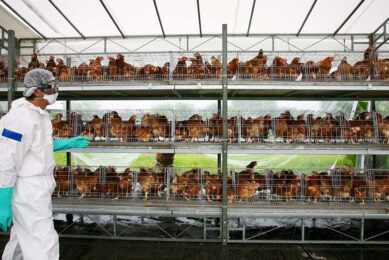
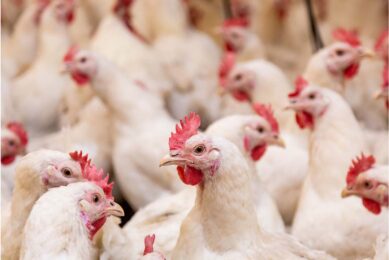
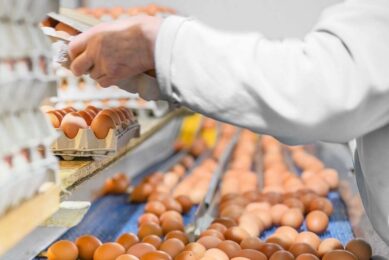




 WP Admin
WP Admin  Bewerk bericht
Bewerk bericht